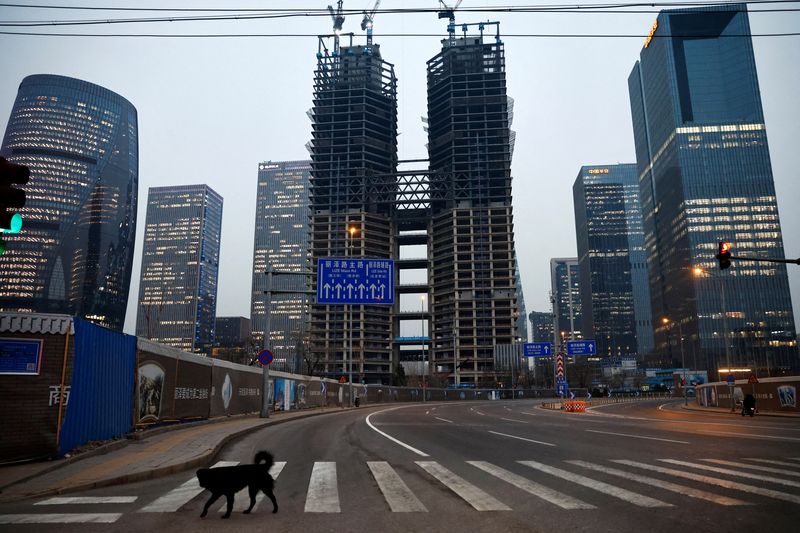BEIJING (Reuters) - A flurry of economic data from China on Monday is expected to show its post-pandemic bounce is quickly fizzling out, raising expectations that Beijing needs to unveil more stimulus measures soon to shore up activity and shaky consumer confidence.
After a strong start to the year following the dismantling of tough COVID-19 measures, recent data have pointed to a sharp loss of economic momentum due to weak demand at home and abroad and a protracted slump in the country's property market, traditionally a significant growth driver.
The world's second-largest economy likely managed just 0.5% growth in the second quarter compared with three months earlier, on a seasonally adjusted basis, according to economists polled by Reuters, with separate data for June expected to show industrial output, retail sales and investment continuing to cool.
Some economists have blamed the "scarring effects" caused by years of strict COVID measures and regulatory curbs on the property and technology sectors - despite recent official efforts to reverse some curbs to support the economy.
With uncertainty running high, cautious households and private businesses are building up their savings and paying off their debts rather than making new purchases or investments. Youth unemployment has hit record highs.
Compared with a year earlier, gross domestic product (GDP) may have grown 7.3% in April-June from a year earlier, compared with growth of 4.5% in the first quarter, economist said.
However, that reading will be heavily skewed by a sharp slump in activity last spring, when parts of the country were in paralysing COVID-19 lockdowns.
Data on Thursday showed China's exports fell the most in three years in June, slumping a worse-than-expected 12.4% year-on-year, as cooling global demands adds more stress on the economy.
New home prices were unchanged in June, the weakest result this year, with rises slowing nationwide in continued weakness for the property sector, which accounts for one-fourth of economic activity.
Producer prices fell at the fastest pace in over seven years in June and consumer prices teetered on the verge of deflation, data showed earlier in the week.
Authorities are likely to roll out more stimulus steps including fiscal spending to fund big-ticket infrastructure projects, more support for consumers and private firms, and some property policy easing, policy insiders and economists said. But analysts say a quick turnaround is unlikely.
China's central bank will use policy tools such as the reserve requirement ratio (RRR) and medium-term lending facility to weather the challenges, a senior bank official said on Friday.
Analysts polled by Reuters expect the central bank to cut banks' reserve requirement ratio (RRR) by 25 basis points in the third quarter, freeing up more funds for lending, while keeping benchmark lending rates steady.
The central bank cut the RRR - the amount of cash that banks must hold as reserves - in March.
China also cut its benchmark lending rates by a modest 10 basis points in June, the first such reduction in 10 months.

But the central bank is likely to be wary of cutting lending rates further. A reluctance to borrow among private companies and households means that continued policy easing could hurt banks that are already battling margin pressures, analysts said.
Aggressive easing could also trigger more capital outflows from China's struggling financial markets and pressure the yuan currency, which recently skidded to eight-month lows.